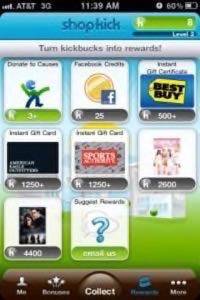At last week’s Open Mobile Summit in San Francisco, several high-profile mobile app designers and publishers spoke about how developers can improve their mobile applications, gain and retain users. On stage were Google’s Lead Interaction Designer, Chris Nesladek, Shopkick’s co-founder Jeff Sellinger and Urban Airship’s CEO Scott Kveton. Each spoke on one of the factors – design, conversion and retention – by providing specific examples from their own previous experience in app development and design.

How to Leverage Design
First up was Google’s Lead Interaction Designer Chris Nesladek, the former Android social UI lead who developed Android’s Quick Contacts widget, plus the Contacts, Facebook and Twitter applications for the Android mobile platform. Along the way, he learned much about the UI/UX side of app design, and how iterative development works.

Nesladek said there are “three levers” to good design. Lever 1 is to adopt an iterative design and development process. Lever 2 is to listen and respond to feedback. This can be done by reading what people are saying online, on message boards, for example, or even reading what commenters say on sites like Engadget.
He provided some examples of how Android used iterative methods for its updates, which included things like the evolution of Android’s pull tab (the bottom tab that pulled up the main menu). This feature wasn’t easy enough for people to use and understand, said Nesladek, which is why future Android versions moved away from a pull-tab design to other types of interfaces.
The third lever to design involves re-applying your learnings “with the care of a craftsman,” said Nesladek. That is, you should have team of people who pay strong attention to what you’re building, and most importantly, have a developer and a designer working together on your end product. He referenced the official Twitter for Android application which involved design and development working as a team as an example of how this should be done.
How to Leverage Conversion
Mobile shopping/rewards/check-in app Shopkick’s co-founder Jeff Sellinger then came on stage to talk about the tipping points for his app’s conversion process and his company’s product strategies for acquiring and retaining users.

What’s the number one challenge for every physical retailer?, Sellinger asked the audience in beginning his speech. “It’s generating foot traffic,” he said. But GPS can’t tell if someone walks into a building, so Shopkick built an entirely new technology called the “Shopkick Signal” which includes in-store hardware to detect the presence of mobile app users walking into the store. The service, which launched in August 2010, is the first program that gives you rewards and deals just for walking in a store, said Sellinger, and has big-name partners including Best Buy, Macy’s, American Eagle, Sports Authority, P&G and Kraft.
But Shopkick needed more than a new technology to encourage users to visit stores more frequently, so it integrated game mechanics into its mobile app. Actions users take lead to rewards, both real and virtual. Shopkick doles out bonus pieces, badges and other discounts and deals to its users who participate, not just by walking into stores, but by scanning product barcodes, making purchases and more.
However, Sellinger admitted that the biggest hurdle for the app is changing user behavior. This is an entirely new experience that was never available before, he said. Persuading users to do different things with their mobile phones while shopping is still difficult.
How to Leverage Retention
Urban Airship CEO Scott Kveton then took the mic to analyze a number of user retention factors including in-app features and channels outside the app that can increase retention.

His company helps other businesses manage the notifications for mobile applications. The reality of apps’ retention rates, explained Kveton, is that there’s only a 5% retention rate on free apps after 30 days.
There are a number of ways to increase retention, Kveton said. For example, you can increase retention through “old school” methods, he explained, referring to standard application updates through the iTunes store. You can also use push notifications, to draw attention to your app. For example, you can send a message that someone beat your game score or a message about a friend inviting you to play a game with them.
In-app purchases and new “for-pay” content can help keep users coming back, too, and has the added benefit of allowing businesses to open up paywalls through the use of subscriptions. ?When you add new content, you can keep the social media “buzz” about your app going, he said. Angry Birds was recently a great example of this with its “Halloween” edition as well as when it released its Android app for free, a move which encouraged a high number of downloads (2 million in 2 days, to be precise).
Another idea is to create an app that only does a few things, but does them really well. In this case, he cited the Instagram app, which lets users snap, add filters and share photos, but not much else.
App developers should additionally try to coax quality reviews from users by prompting for them after the user has played a few levels of the game or has used the app regularly.
Finally, Kveton reminded developers that whatever you do should be an attempt at “starting a conversation” with your users, not spamming them. “Mobile isn’t about marketing to your users,” Kveton said. People don’t like spam on their phones just as they don’t like spam in their email inbox. Provide something interesting to them instead and they’ll keep coming back.




















